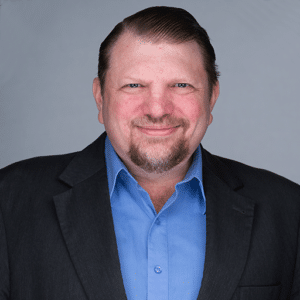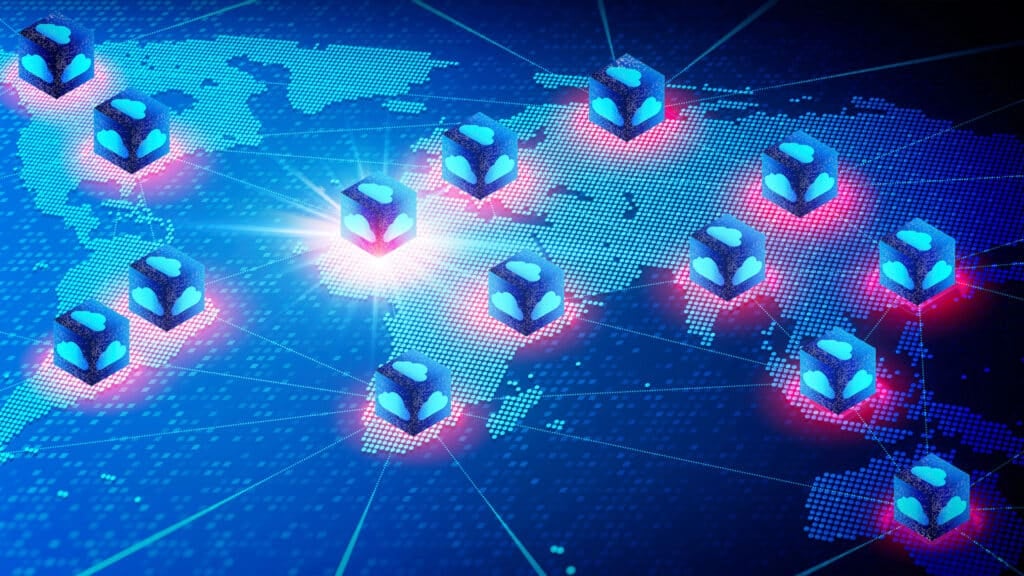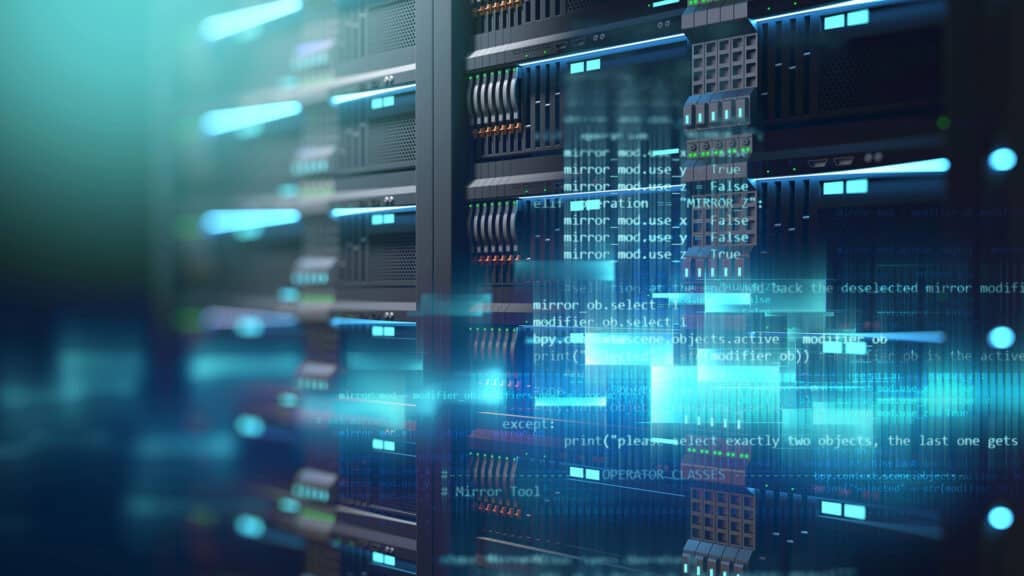On this episode of the Six Five Webcast – The 5G Factor, hosts Ron Westfall and Tom Hollingsworth discuss the crucial role US Communication Service Providers (CSPs) T-Mobile, AT&T, and Verizon play in public safety, particularly in response to natural disasters like hurricanes.
Their discussion covers:
- Verizon and its dedicated first responder and public safety arm, Verizon Frontline, and their efforts in repairing cell sites damaged by Hurricane Helene in North Carolina and Tennessee.
- T-Mobile and Starlink’s collaboration, marked by receiving a second Special Temporary Authority (STA) from the FCC to operate their innovative Direct-to-Cellular service over Hurricane Milton’s devastating path in Florida.
- The expansive support provided by the FirstNet, built with AT&T, team for first responders throughout the US Southeast, highlighting the deployment of dedicated FirstNet assets and solutions for emergency support.
- Plus, the announcement from Qualcomm and Honeywell at Embedded World North America, unveiling their partnership to revolutionize the energy sector with cutting-edge 5G, Low Power Wireless, and AI-Enabled technologies.
Learn more about the Six Five Webcast – The 5G Factor at The Futurum Group.
Watch the video below, and be sure to subscribe to our YouTube channel, so you never miss an episode.
Or listen to the audio here:
Disclaimer: The Six Five Webcast – The 5G Factor is for information and entertainment purposes only. Over the course of this webcast, we may talk about companies that are publicly traded, but please do not take anything that we say as a recommendation about what you should do with your investment dollars. We are not investment advisors, and we ask that you do not treat us as such.
Transcript:
Ron Westfall: Hello, and welcome everyone to The 5G Factor. I’m Ron Westfall, Research Director here at The Futurum Group. I’m joined here today by my distinguished colleague, Tom Hollingsworth, the Networking Nerd and Event Lead at Tech Field Day here at The Futurum Group. In fact, I believe we’re coming off a successful string of Tech Field Days. I’m certainly looking forward to also pointing out that there’s some upcoming ones that I think definitely merit attention. With that, Tom, how have you been since our last 5G Factor? How are things coming along?
Tom Hollingsworth: They’re coming along well. I’ve been pretty busy. Like you mentioned, we have some great stuff coming up. We’ve got a security-focused event happening October 16th and 17th. Then we have a networking Field Day event on the 6th and 7th of November. Then we have another mobility Field Day event happening toward the end of the month. It’s basically keeping me out of trouble at this point.
Ron Westfall: Yes. I’ll follow up on this at the end here. Yes, I think the themes of the upcoming Tech Field Days definitely are very exceptionally well aligned with what we’ll be talking about today. That, I think, is why 5G and mobile networks in general, are so essential to public safety. Let’s dive right in and look at what is it about mobile networks that can just make all the difference when it comes to life and death situations. I think we all know that we’ve seen some massive hurricanes hit the US Southeast. Let’s dive into how the mobile operators have responded to Hurricanes Milton and Helene, specifically across the US Southeast. These were two incredibly disruptive and lethal weather events with immense direct impact on public safety, but society across the board. I think we understand that.
To begin, Georgia, North Carolina, South Carolina, and Tennessee all have multiple counties that were severely impacted by downed cell sites due to Hurricane Helene. So we’ll start with Hurricane Helene, which impacted two weeks ago. Now, the FCC has been tracking downed sites in its Disaster Information Reporting System, or DIRS reports. This is something that has proven very helpful in understanding where mobile coverage is available during these public safety events. Now in North Carolina, nearly 80% of cell sites were our of service in the disaster area on September 28th. About 40% were out of service in the affected areas in Tennessee. Fortunately, that’s dropped down already. It was about 15% and 5% respectively, for North Carolina and Tennessee, as of October 8th. And surely, those numbers will continue to go down as we get further into October.
Now, what I find very significant is that Verizon, and we’ll start with them, in its first responder and public safety arm, Verizon Frontline, have made tremendous strides fixing cell sites knocked out and damaged by Hurricane Helene. Verizon said 95% of its cells sites impacted by Hurricane Helene have been restored. However, it will take time to restore permanent power to these sites, as many of them are still reliant on generators. Other than a few towers that are still unaccessible in the Chimney Rock area, God bless those folks, Verizon crews have accessed all impacted sites in Western North Carolina. Verizon indicated that all sites have generators and are on fueling plans. Although, fiber to many of these sites are still out. That makes sense. What I think is interesting is that Verizon’s Frontline Satellite Pico-cell on Trailer, or SPOT, is an example of how mobile assets are deployed to provide connectivity during natural disasters.
Now, in addition to Verizon, let’s take a snapshot of what T-Mobile has done and is continuing to do. For Hurricane Milton, let’s move onto the next hurricane. The carrier, for example, has hardened its network to withstand anticipated extreme weather conditions along Milton’s path. And, T-Mobile’s experienced emergency response teams are prepared. Again, portable generators and heavy-duty network equipment to provide support when and where needed. Also, just like Verizon with its SPOT assets, T-Mobile and Starlink asked for and received a second special temporary authority, or STA, from the FCC to operate their T-Mobile Starlink direct-to-cellular service over Hurricane Milton’s path. We’re already seeing why direct-to-cellular, or DTC, can be so important to the menu of an operator, such as T-Mobile, or Verizon, or AT&T, or any operator in the world, because of these public safety scenarios.
That means wireless emergency alerts and SMS, including the ability to text 911 are now enabled in Florida, as well as the areas previously impacted by Hurricane Helene, namely North Carolina and Tennessee. On this very important note, Tom, what are you seeing in terms of what the operators are doing differently, and improving their public safety response to things such as Hurricanes Milton and Helene?
Tom Hollingsworth: Living in an area myself where there’s a lot of natural disasters, we’ve seen all kinds of craziness happen. Not just from infrastructure being knocked out. But when you lose coverage in a specific area, the other towers basically get overloaded by that system. If you’re not familiar with what this feels like, if you’re not someone who lives through areas with hurricanes and tornadoes, it’s not uncommon, it feels like maybe trying to go to a sports stadium and trying to use your cellphone inside of the sports stadium, because everybody’s crowded all around one or two towers. I like the fact that both companies are starting to realize the value of satellite communications. They’re effectively using, in Verizon’s case, they’re using these SPOT Pico-cells as an up-link. In T-Mobile’s case, they’re basically saying, “Well, we can get you onto a Starlink satellite directly.” I think that ultimately that’s going to be the way that they’re going to go in the future. Just because the ability to not have to manage massive infrastructure in these kinds of situations is critical for their operations’ response.
I get it. Verizon has a very old way of thinking about this. Tower’s down, no connectivity. We need to send a replacement tower out there until we can get a crew out to replace the infrastructure that’s down. That’s a great idea. I applaud them for that, I applaud them for thinking through this. This is definitely the kind of thing that I would expect to see here in Oklahoma, when you have a tornado that comes through the middle of town, or something like that. But T-Mobile is thinking ahead. They’re saying, “Why would we need to deploy infrastructure, when we can just drop our handsets onto Starlink?” I think the key differentiation here, between what they’re doing and what somebody else is doing, which we’ll talk about in just a minute, is that by directly interfacing with the satellite hardware as the carrier, they can ensure that all of their subscribers are connecting and getting these emergency alerts, and things like that. Regardless of the operating system that they’re using. I want you to keep that in mind as we discuss the next story, because I think it’s going to be important, the distinction between whose offering the services and which services their offering, and how that can impact a portion of your subscribers.
Ron Westfall: Yeah, that’s a wonderful segue, Tom. Before we move onto AT&T, which is the next carrier we’re going to definitely address. One thing that I think is fascinating is that it’s all about getting energy to any cell tower out there. What I think is going to definitely proliferate is ways to make portable energy align with mobile infrastructure. We’re seeing some very good use cases where you have renewable energy playing a role here. That is, if you have a generator that’s solar-powered, then that can actually be a huge difference in terms of the flexibility that built in. But also, the time to energy, I guess you can call it. That, of course, can be vital for these scenarios. Yes, I think it’s important. It doesn’t matter if it’s hurricanes, tornadoes. It could be blizzards. It could be forest fires. It could be tsunamis, related earthquakes, and earthquakes themselves. I’ll stop there, but you get the idea. Mobile infrastructure is vital.
I think that’s one reason why there is impetus for the first network to be built with AT&T. That is basically, it was purpose-built for first responders. In terms of, say Hurricane Milton, that responded to over a dozen requests for emergency support from public safety on FirstNet and the FirstNet Response Operations Group, or ROG. It’s deploying dedicated FirstNet assets and other solutions to further support these critical communications. Additionally, AT&T FirstNet liaisons are in contact with federal, state, and local officials regarding the deployment efforts to support public safety and the communities in impacted areas.
Now, what makes FirstNet different, as AT&T spotlights it, is that it’s the only nationwide communications network created with and for public safety. First, again, that’s the nationwide coverage. It has a footprint with 205-square-miles more coverage than commercial networks. Second, it’s always on priority and preemption. FirstNet customers maintain priority and preemption across LTE Band 14 spectrum, plus all of AT&T’s commercial LTE spectrum bands. Finally, it’s the comprehensive security ecosystem that’s embedded in this. It’s really, again, a way for a comprehensive tower to core network encryption that’s based on, well, open industry standards. With that, this network was built just for these situations. Tom, per your observations regarding T-Mobile and it’s distinction with Verizon, what is it about AT&T’s supported FirstNet network that stands out to you?
Tom Hollingsworth: The fact that it is a dedicated first responder network that is isolated from the rest of their network. I actually have a friend who recently got onto FirstNet, as someone who acts as a first responder. It was funny, because we were actually in the wilderness doing some camping. He noticed that he actually got service in places he would not normally have been able to get service at this campground, because he was on Band 14, it’s a wider coverage area. Because what AT&T is effectively trying to say is, for those people that qualify, we would need to make sure that they have this coverage. That’s great, if you’re trying to get firefighters and EMTs that are ready to go out, and go into these disaster areas and do work because you can prioritize getting those systems up.
I think what’s more telling here is that, when you look at the spectrum, AT&T is very much focused on first responders. Verizon was focused on getting satellite up-links to provide for their subscribers in clustered islands, basically. Then, T-Mobile has said, “We’re going to do satellite up-links.” AT&T has also responded to their client-base saying, “If you have the capability to use satellite, you should do it.” Note that that’s not what T-Mobile said. T-Mobile said, “We’re going to authorize you guys to talk directly to Starlink.” AT&T said, “If you’re running an iPhone 14 Pro or newer, you’re running iOS 16.1 or later, you can use Apple’s iMessage to the satellite in order to be able to send communications.”
I saw notes about this, as Milton was starting to make landfall, as Helene was starting to make landfall. People were saying, “You can use iOS.” Because iOS 18 introduced the ability to send text messages, any text message via satellite. Prior to iOS 18, it had to be an emergency services text. Basically, “I’m in trouble at this location, please send help.” Now I can send real text messages. A lot of people adopted that as a way to get the word out, to the point where SMS and RCS were down for a while after Helene. Then of course, with Milton deciding to take another swath at the middle of Florida, they’re seeing a lot of coverage down. Even though the impact wasn’t as bad as what they were expecting, it’s still not great. But people who are using iPhones will be able to do that.
AT&T is basically saying, “If you’re running an iPhone 14 Pro or newer, or you’re a first responder, we’ve got you covered. Everybody else, we’ll get it up eventually.” I can see that there’s value in offloading the first responders onto Band 14. I can also see that relying on Apple’s software and hardware infrastructure that rides on top of your network to be able to send that stuff to keep your subscribers happy, I wonder how that feels for the Samsung people. I wonder if they’re making the decision about whether or not they’re going to stick with AT&T, or if they’re going to move off to a carrier like Verizon or T-Mobile that gives them more options.
Ron Westfall: Yeah, that’s an outstanding question. With all the progress that’s being made, this is a good demonstration that yet more progress needs to be made. Clearly, the more people who are able to communicate within these situations with minimal delay, the better. Okay, Apple today. Well hopefully, Android tomorrow. That, I think, is something that we’ll see developments on. Related to this, and I touched on it already, is the energy aspects of mobile networks and why they could be so important. Recently, Embedded World North America was conducted in Austin, Texas. What we saw there, I thought it was an important announcement, was Qualcomm and Honeywell announced they’re working together to basically look at transforming the energy sector when it comes to using 5G, low power wireless, and AI-enabled solutions. Really, it’s a trinity here of these technologies coming together to really make a difference in terms of how energy infrastructure can be more optimized and more efficient. This is related, again, to getting energy out to cell sites and towers regardless, but certainly in emergency situations.
Now, through this collaboration, what Honeywell is doing is incorporating Qualcomm’s connectivity and AI technologies into AI-powered applications. That includes the Honeywell Field Process Knowledge System, or PKS. Now what I see is, by integrating these new capabilities, Honeywell’s Field PKS can provide connectivity to remote corners of plants and manufacturing facilities, enabling greater data capture and analytics at the edge. That’s very important. What we’ve been hearing about, and what’s I think really coming to fruition, is that the edge is really becoming more intelligent. Having more wireless capabilities combined with low energy thresholds. Again, AI is the capability that’s really helping to move this further into reality.
Now I think there are a few important takeaways from this Qualcomm Honeywell alliance that merit shout-outs. That is, first of all, it’s combining Qualcomm’s portfolio of low power AI-enabled processors with native wireless connectivity, and that includes 450 megahertz, wifi. Again, the low power wireless access, or LPWA, as well as private 4G and 5G networks, alongside software and computer vision with Honeywell’s portfolio of sensor technologies that are aimed at accelerating the development of the family of industrial sensors used for monitoring process parameters, asset parameters, as well as environmental conditions. All these things are important.
What has happened, I believe, is when it’s come to traditional industrial sensor implementations, it’s very much siloed. It’s hard to really get additional information from the existing systems when it comes to what about temperature, what about aligning with, say energy efficiency and sustainability goals, and so forth. This is really aimed at overcoming these types of limitations. Also, the joint offering prioritizes enabling customers in the energy sector to use intelligent handheld devices, and again, those battery-powered LPWA sensors, to monitor critical systems, and use connected hubs and gateways for aggregating essential sensor data. Really, it’s bringing all this information together in a more intelligent and accessible way. Using, again, 4G, 5G private networks as part of this.
It has been, I think, subject to criticism because of the private industry with the advent of 5G did not take off as originally anticipated. However, hold your horses. I think what we’re seeing now is that the private wireless use case is becoming more compelling. In other words, it’s going to grow I think significantly, certainly in the double-digit cage arrange, over the next few years because of advances like this. It’s not just private wireless, but also wifi and these other capabilities. Now earlier in the year, both companies collaborated on an AI-enabled multi-modal intelligent agent powered by Qualcomm that allows mobile workers in places like distribution centers and retail industries to interact with handheld devices through voice, pictures, and video. That’s the AI component kicking in. Now you have truly intelligent devices that can allow the workers not to be bound by text, or say customized command interfaces. This is something that I think is definitely going to improve the safety and the understanding of these environments.
To wrap up my comments on this specifically, I think it’s showing that both of them are developing the on-device gen AI capabilities that can catalyze the expansion of the connected intelligent edge across the energy sector. I don’t think it’s going to stop there. Certainly, in Honeywell’s case, there’s priority on the energy sector, but we can also anticipate aviation as another, I think, realm of innovation for this. But Qualcomm, I think, has been very smart in saying that its portfolio is chassis-based. Certainly, it will be applicable to the energy sector, but it will be applicable to many other verticals. Such as healthcare, such as telecommunications, you name it. I think the energy sector here is definitely a spotlight that merits our attention. With that, Tom, what are your takeaways from the Qualcomm Honeywell partnership and its implications for the energy sector?
Tom Hollingsworth: I think that you hit on something that’s really important that a lot of people need to understand about the rollout of private cellular up to this point. You’re right, it has not been as smooth as we would have liked and there hasn’t been a huge uptick in it. That’s not a knock on the people who are developing the technology. I think where we landed on the wrong side of the fence was that it was aimed at the wrong people. You were trying to convince people that they needed to switch their cellphones over to using these things. I don’t need to do that. I have pretty good coverage, natural disasters non withstanding, wherever I go.
But what about those other devices? Well, I have wifi for my laptop. I can use my phone on wifi if I need to. Those devices have a specific battery budget built in, if you want to call it that. Just go on any rumor site and just check out the number of people who are dissecting how big the battery is going to be in the next iPhone, or the next Galaxy phone. Because we know that there’s a certain amount of power that needs to be pumped through these things in order to be able to use them, and that allows us certain things. I can put a wifi radio in an iPhone because I know I have more than enough battery to run everything else.
But when you start talking about some of these edge sensors, when you start talking about some of these edge devices, their battery budget is way different. Because they are either running super low power, because they’re not in an area where they have access to good, clean, consistent power. Or, they have certain different kinds of needs. I always think back to, when I worked at Walmart, the old Telzon guns. They were wireless in the store, but they were running on 900 megahertz. They had very little data usage, and battery powered, and all these other things. But now, that idea is out the window and what people are using are these smaller, little handheld scanners that look like Android phones. They have more complicated graphical needs, and stuff like that.
Being able to deliver a more consistent coverage for those devices, especially in remote offices, especially in challenging wifi environments. Anybody ever try to do a site survey in the middle of a warehouse will tell you how that goes. That’s valuable. Then you add in the fact that Qualcomm is using some of their AI capabilities to figure out how to more efficiently deliver the data. To figure out how to keep things from being overwhelmed. To be able to do more on-device processing. I know it sounds weird after I just said these things have a battery budget, so you can’t be using hungry wifi at 20-plus watts. But if you have a reasonable CPU that can do some of the processing work on a model that’s lightweight and designed for it, why not do some of that processing work there? Because it offloads your backend, it keeps your communications channels more free because you’re not spending more duty cycles to send larger amounts of data. Overall, it makes the airtime more fair and clean for everybody, which is something that’s very important when you pack dozens, if not hundreds of sensors into an area that all are competing for transmission time.
Ron Westfall: Yeah. I think those are outstanding observations. I think what is important about the partnership is that it will make a difference in moving the needle, at least incrementally, in terms of making the energy sector more able to take advantage of what can simply be called AI-enabled capabilities that will allow what can be characterized as digital transformation. One key takeaway from the Embedded World North America event is that bare metal implementations are still in play when it comes IOT sensor implementations. What I think the partnership can do is help accommodate those implementations, but also demonstrate, certainly in the energy sector, that the new intelligent edge capabilities can really transform, at least make better, more efficient the energy capabilities, or at least the awareness and management capabilities, across energy environments. I think that is something that we’ll be paying attention to, certainly. But I think it’s showing that AI is really making a difference, in terms of enabling things like the Honeywell PKS, or the Field PKS, to have these new gen AI capabilities. That much makes it easier for the field teams out there to do their jobs, and to make it all the more safe for them for that matter.
With that, thank you again, Tom, for joining The 5G Factor. What I would like to highlight again, and we did at the top of the show, is our upcoming Tech Field Day events. For reference, Cloud Field Day is October 23rd and 24th. Before that is Security Field Day, which is October 16th and 17th. Before the end of this month, be sure to tune into both of these Tech Field Day events. On the horizon, to kickoff November, is Networking Field Day 36, and that’s November 6th and 7th. I’ll be participating in that event. Definitely looking forward to all of them, because it’s just a wealth of great information and insights, hearing from some of the most cutting-edge, as well as significant players within all of these areas. With that, Tom, any additional thoughts on Tech Field Day and the upcoming calendar?
Tom Hollingsworth: Well, we have a jam-packed lineup of presenters that are covering a variety of different technology areas. People who listen to The 5G Factor will definitely get something out of it, whether we’re talking about securing your communications infrastructure, or we’re talking about building AI networking infrastructure, or talking about how we’re making wifi and 5G play nicely together. There’s a lot of opportunity for you to learn things. I highly recommend you tune in to techfieldday.com to follow along. If you go over there, you can even download a calendar of the presentation times for your favorite companies. But if you can’t catch that, you can always go to one of our Tech Strong TV sites. They’ll be broadcasting live as well. Or follow Ron and I on LinkedIn, because you can catch the replay if you’re not able to watch it when it’s live. You get all the same great information when it’s convenient for you, maybe when your boss doesn’t have you working on stuff.
Ron Westfall: What’s not to like? Yes, excellent. It just shows you the flexibility here with The 5G Factor and Tech Field Day formats. With that, thank you again, everyone, for taking time out and joining us. With that, everybody, please have a safe 5G day. Good day, everyone.
Author Information
Ron is an experienced, customer-focused research expert and analyst, with over 20 years of experience in the digital and IT transformation markets, working with businesses to drive consistent revenue and sales growth.
He is a recognized authority at tracking the evolution of and identifying the key disruptive trends within the service enablement ecosystem, including a wide range of topics across software and services, infrastructure, 5G communications, Internet of Things (IoT), Artificial Intelligence (AI), analytics, security, cloud computing, revenue management, and regulatory issues.
Prior to his work with The Futurum Group, Ron worked with GlobalData Technology creating syndicated and custom research across a wide variety of technical fields. His work with Current Analysis focused on the broadband and service provider infrastructure markets.
Ron holds a Master of Arts in Public Policy from University of Nevada — Las Vegas and a Bachelor of Arts in political science/government from William and Mary.









